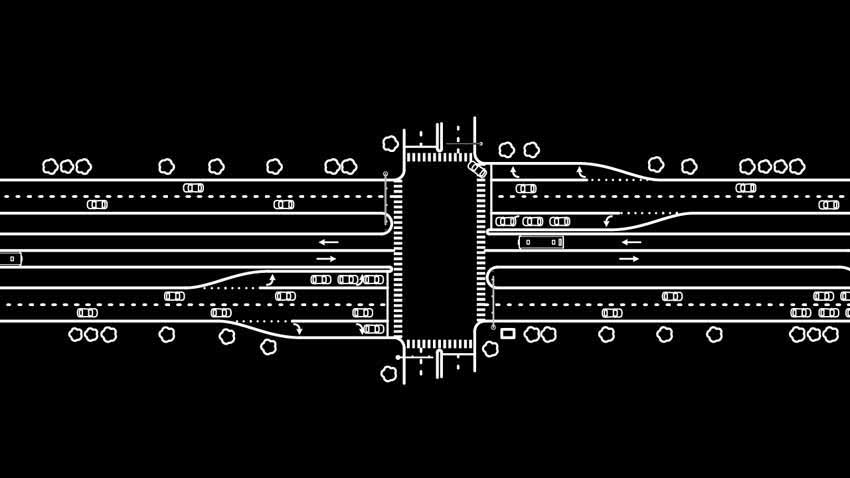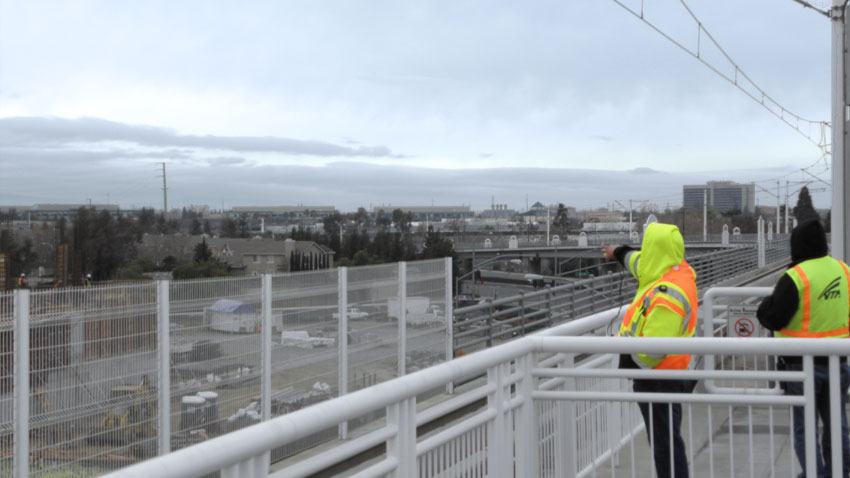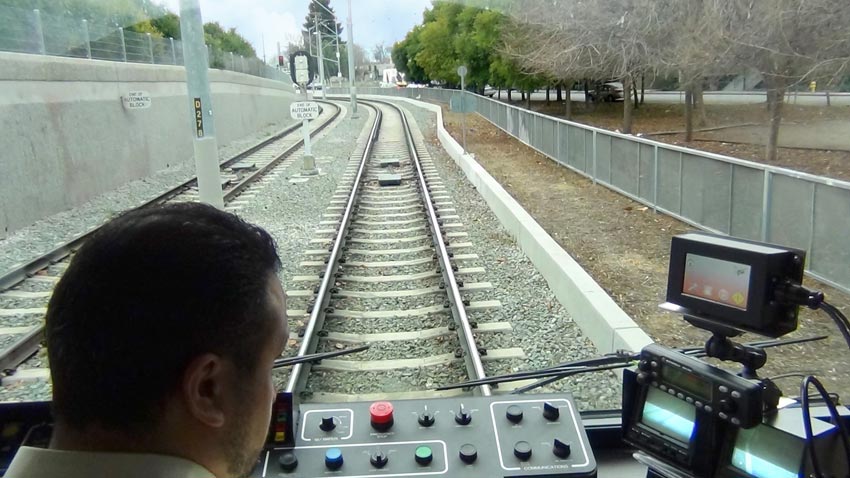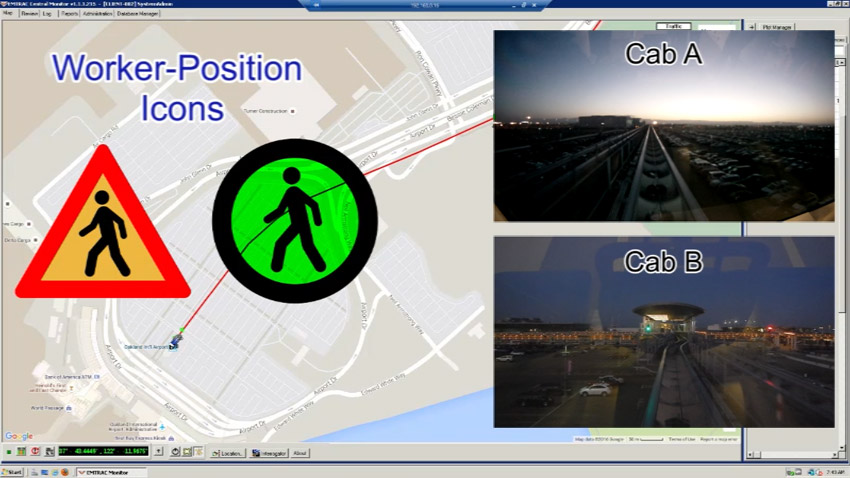- Responder Safety: In addition to reducing response times, the use of EVP has been shown to decrease the likelihood of emergency-vehicle crashes during responses.[1]
- Reliable Range: Transmissions do not require line-of-sight, and are reliable in even unfavorable conditions—with a typical urban range of over 3,600 feet (1,100 m).
- Downstream Detection: Equipped vehicles can notify multiple downstream traffic controllers, resulting in modified phasing to more effectively clear the corridor.
- Customization: Detection-zones may be customized for individual vehicles so signal preemption is granted when needed. EVP may be granted based on a number of factors, such as first-come, first-served or by vehicle priority level.
- Flexibility: The EMTRAC system interfaces with third-party traffic systems to enable centralized signal management.
- Cost Effective: The same EMTRAC vehicle and wayside components may be utilized by multiple stakeholders, including police, fire/rescue, EMS, transit, and traffic agencies.
EVP for Law Enforcement / Public Safety
The EMTRAC system offers the required range and positioning capability to provide reliable passage for public safety vehicles.
The in-cab Control Head provides alerts to notify drivers when other equipped vehicles are approaching the same intersections, further increasing safety for responding officers.
Monitoring personnel are able to see intersection signal states as well as vehicle location and activity on the Central Monitor AVL (automatic vehicle location) application. The EMTRAC system also provides detailed activity data that can be provided in a number of data-access formats.
Because the same EMTRAC vehicle and wayside components may be utilized by first-response, transit, and traffic agencies, project costs are considerably lower than competing system installations.

Automatic Logs & Updates
The EMTRAC Interrogator System enables first-response agencies to automatically download activity logs from—and upload firmware and database updates to—equipped vehicles.
The EMTRAC Interrogator System can be used at police stations, fire stations, municipal-vehicle garages and lots, as well as maintenance facilities.
As equipped vehicles return to the station or garage, the EMTRAC Interrogator System utilizes secure frequency-hopping spread spectrum radio to quickly download data logs from onboard EMTRAC units. This data is forwarded to a server running the EMTRAC Central Monitor software, where the data may be viewed by designated personnel.


EMTRAC Automatic Vehicle Location (AVL)
The EMTRAC Central Monitoring System enables public safety dispatch and department personnel to remotely monitor vehicle progress and activity in real time.
With EMTRAC AVL, equipped vehicles automatically transmit location and activity data to network-connected EMTRAC detectors in wayside cabinets. This data is displayed on central-workstation monitors, showing vehicle movement on a map in real-time. The data is also recorded in detailed logs for later review.
The vehicle and wayside components used for the AVL system are the same as those used for basic EMTRAC EVP/TSP functionality, making it both a simple and cost-effective way to implement an accurate and reliable AVL system.
- Automatically locate specific vehicles and intersections with the click of a mouse.
- Connect to intersection controller switches to enable display of current signal status on map.
- Automatically download and save activity logs from onboard VCUs while vehicles are at station.
- Configure system to automatically generate reports, which are automatically emailed and archived at specified intervals.
- Automatically alert designated personnel—as specified events occur.
- View logs, and generate reports, that show changes in connectivity status to help identify possible network issues.
- Interface with optional EMTRAC components, such as the onboard Control Head that alert the driver if priority requests are denied by the controller.
- Timeliness: View vehicle progress that is updated on the map every one to four seconds.
- Ease of Installation: Central Monitoring System interfaces with existing EMTRAC TSP and EVP system components, requiring minimal additional equipment.
- Expandability: Agencies can upgrade their existing EMTRAC system with minimal effort, adding capabilities as schedules and budgets allow.
- Flexibility: Customize permissions for individual or group users and alter reporting responses to meet specific department requirements.
- Accuracy: The EMTRAC system utilizes precision satellite and inertial positioning to ensure exact vehicle location reporting—even in unfavorable urban environments.
- Security: Frequency-Hopping Spread Spectrum radio signal has superior range and utilizes AES encryption.

Range, Reliability, and Precision
The EMTRAC system offers unmatched transmission range and signal reliability. Under typical urban RF-propagation conditions, the effective range of communication from vehicle to equipped intersection is 3,500 feet (over 1,000 meters). For applications requiring additional range, transmission signals may be relayed via wayside equipment to extend communication distance.
EMTRAC equipment is also equipped with the most advanced satellite (concurrent GPS, Galileo, and GLONASS) and inertial technology, providing 100-percent coverage and positioning for equipped vehicles.
- Low Profile: For external connections, the EMTRAC Interrogator Kit requires only 120 VAC power and Ethernet. All communication with EMTRAC vehicle components is performed wirelessly.
- Limitless Memory: By transferring activity logs to the system server, onboard EMTRAC components are able to continually store new log entries.
- Timeliness: High communication rates enable fast data transfers, while offering many options for where to mount the Interrogator—such as near refueling or washing stations.
- Flexibility: The EMTRAC Interrogator may be mounted on wall, pole, or other structure, and multiple antenna options allow for reliable communication, even in high-interference environments.
- Timeliness: View vehicle progress that is updated on the map every one to four seconds.
- Ease of Installation: Central Monitoring System interfaces with existing EMTRAC TSP and EVP system components, requiring minimal additional equipment.
- Expandability: Agencies can upgrade their existing EMTRAC system with minimal effort, adding capabilities as schedules and budgets allow.
- Flexibility: Customize permissions for individual or group users and alter reporting responses to meet specific department requirements.
- Accuracy: The EMTRAC system utilizes precision satellite and inertial positioning to ensure exact vehicle location reporting—even in unfavorable urban environments.
- Security: Frequency-Hopping Spread Spectrum radio signal has superior range and utilizes AES encryption.
References
1. Traffic Signal Preemption for Emergency Vehicles: A Cross-Cutting Study, U.S. DOT Federal Highway Administration, Report No. FHWAJPO-05-010, EDL No. 14097. January 2006.
EMTRAC Videos
EMTRAC System video demonstrations of EMTRAC System capabilities, including Emergency Vehicle Preemption (EVP), Transit Signal Priority (TSP), transit rail safety, vehicle detection, and signal management.










